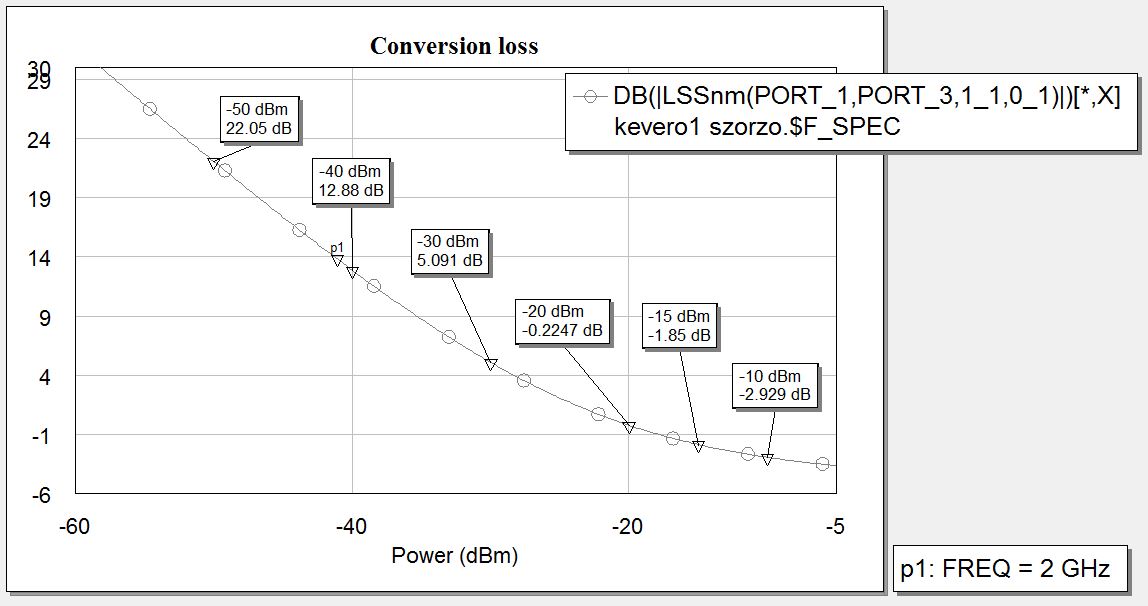Mixer conversion loss across input power level
I am designing an upconverter FET mixer, in which LO is applied to the gate and IF is applied to the drain, and it is biased in the linear region (small drain-source voltage) so that the change in drain-source voltage (IF signal) exerts a big change in the drain current. Simulation gives nice results, but when I simulated conversion loss as the function of input IF power in AWR, I got the following image. Is it possible, or is something wrong with the software? It is really curious. (I simulated really low power levels because to show the seemingly impossible results.) (On the picture, positive values mean gain and negative values mean loss. It can be seen that below a certain input power level, the output gives a constant level, but even in the -20...0dBm region it shouldn't look like this, right?)

Thanks in advance for any useful answer!
Is nothing wrong with your simulation. This a normal behavior of the conversion loss vs LO input power in a mixer design.
But I think there is a spelling mistake in your post. You mentioned twice about IF input power.
Actually IF should be an output signal, which results from mixing RF input signal and LO input signal.
No, the horizontal axis is the IF input power. This is an upconverting mixer, I am mixing IF and LO input signals to get output RF signal. If it was LO power, loss should be smaller with increasing LO power. With increasing IF power, loss should be greater, but there should be a linear region in which loss is constant. (As I said, I plotted the difference of output RF and input IF signal levels, so positive results mean gain, negative mean loss, and greater absolute value negative means greater loss.)
Can you post your circuit and test-bench here ?
Sorry, I missed the word "upconverter". But again, I think everything should be normal behavior with your mixer simulation, even you are sweeping the IF level (and assume LO level is constant).
Anyway, to get near theory upconversion results, use a double-balanced mixer configuration.
I should point it out ;
If Id is a variable linearly dependent on Vds, how mixing function will be occurred by this linear function ? It will act as a summing of two signal by multiplying with constant A..
Right ? or I miss something..
In the saturation region Id is dependent on Vgs^2 (diplexed input signals applied to the gate). But in the linear region among others it depends on Vds^2 and Vds*Vgs. So it is only linear for a fixed Vgs, but it is not so in a mixer. This configuration is also called a multiplier type mixer. It looks like a resistive FET mixer but there is a small DC Vds applied.
